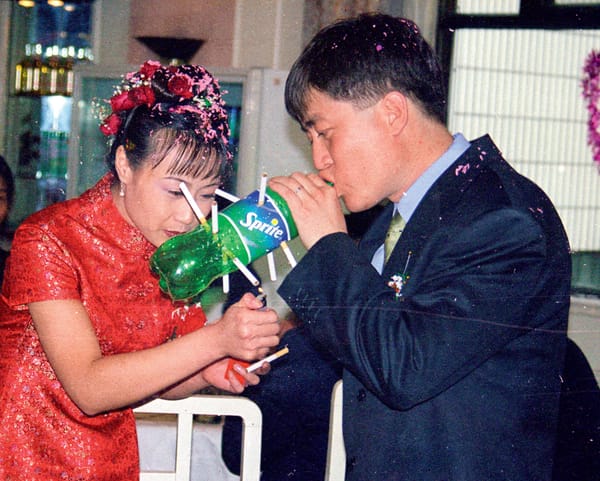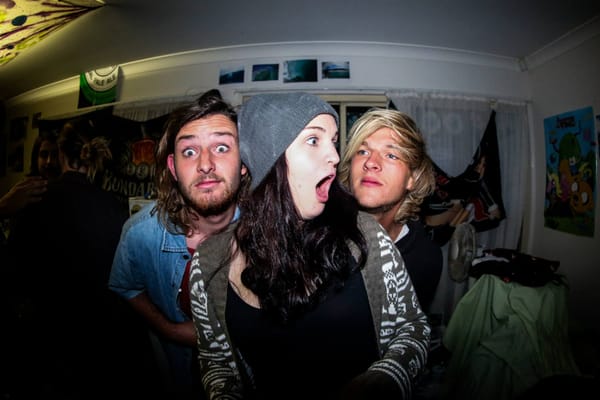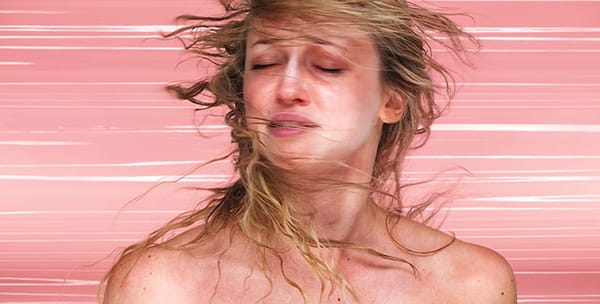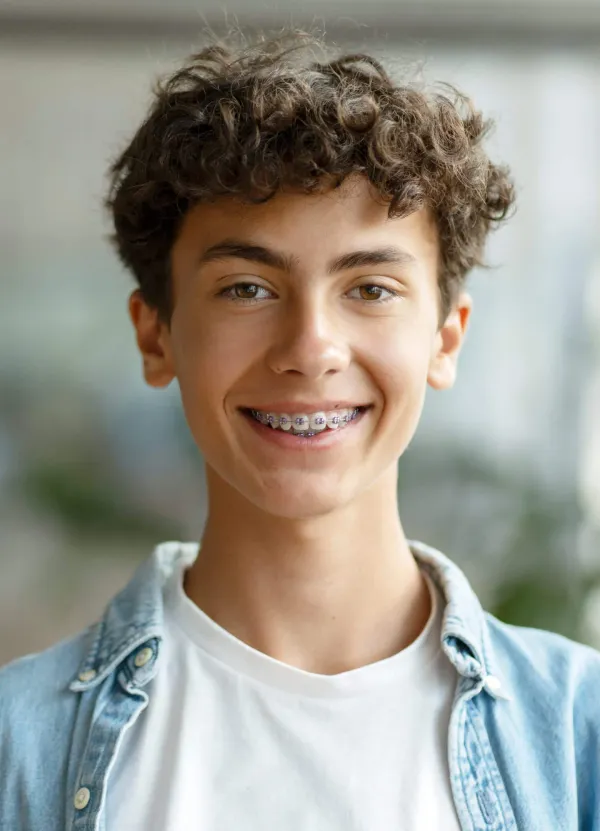Real of their own Accord
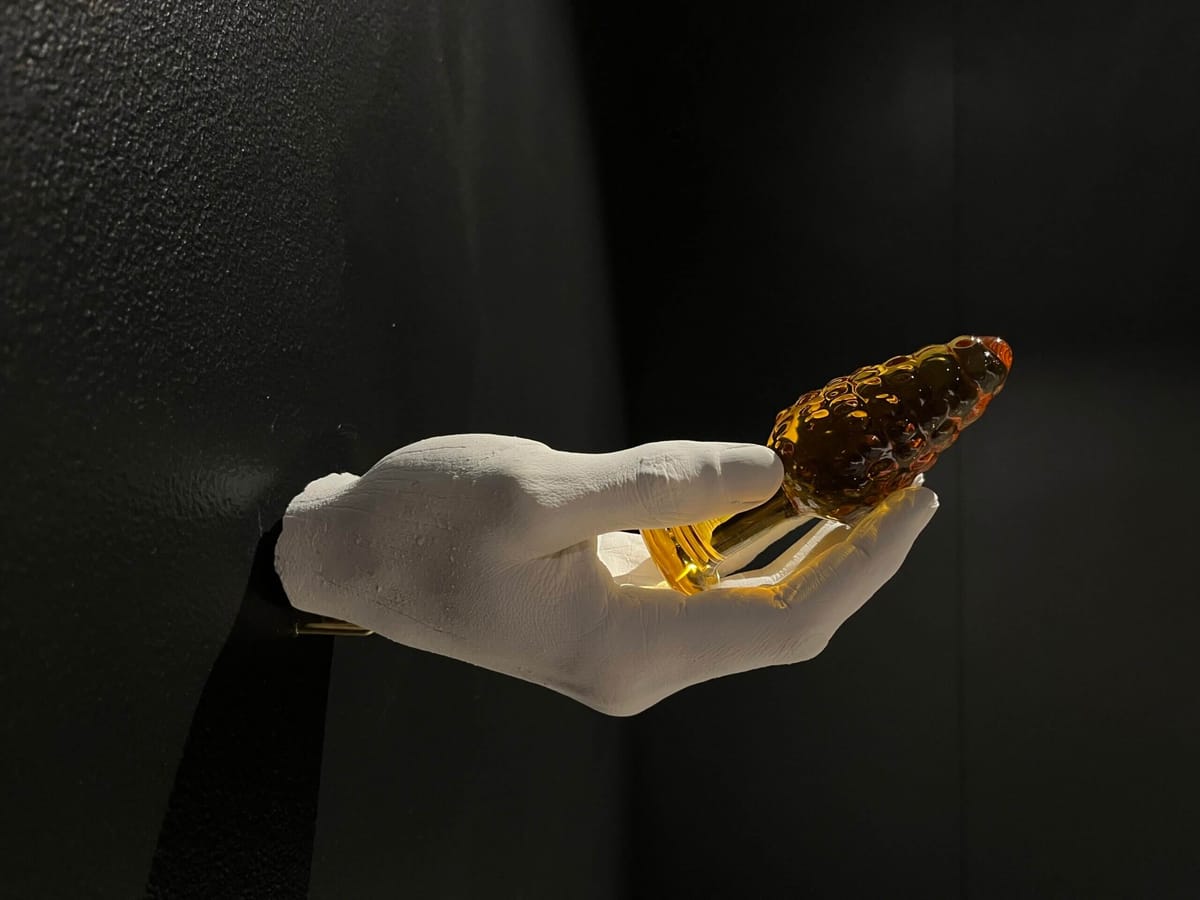
More of a guttural response than a review and definitely not a critique of the exhibitions ‘Terra Culture’ by Bianca Tainsh and ‘A man that didn’t have betrayal in his heart’ by Anastasia Booth at Metro Arts, West End from 4 Sep - 15 Nov 2025.
Redacted Redacted Redacted Redacted Redacted Redacted Redacted Redacted Redacted Redacted Redacted Redacted Redacted Redacted Redacted Redacted Redacted Redacted Reda........ I made my way to Metro Arts in West End.
Still debating whether to get Japanese across the road or make do with a $6 pack of cheese and bacon rolls and an energy drink. I still had a lot of day to get through after an early start and visiting Metro to see the exhibitions by Anastasia Booth and Bianca Tainsh was only the halfway mark. The beginnings of these notes were written at DADDY’s on Montague, also in West End.
How we enter a space is almost as important as what is being presented on the inside of that space. It’s this clash, this threshold that makes the experience. Sure there’s things the space, curators and the artists whose work is exhibiting can do to try to ensure that what you get out of that experience is as close to what they intend as possible. In the end though, you are the unknown quantity that can and will undo all of that.
If Metro Arts gallery spaces weren't occupying the space it does in the newly (2022?) built Sekisui House ‘West Village’ it's not hard to imagine a clothes shop for middle aged ladies instead, staffed by a singular middle aged lady. Particularly, Gallery One. Which, I entered first to see Terra Culture by Bianca Tainsh. Pausing to take in the linen and sculptural object containing a small selection of plants, in the window space. Through the doorway, I immediately encounter a raised weathered steel sculptural planter box, sitting just above eye level, with an intentionally placed selection of flora that I’m told is endemic (via the exhibition room sheet) to artists' property in Weyba. The work titled Arc Viewer, features the type of planter I’d expect to find in one of those large minimalist built concrete homes on one of the hills overlooking Weyba, with the plants looking slightly underwatered as these ones did.
The entire gallery space carried a cool humid smell of the flora and dirt, meticulously placed throughout. The next work, Weyba, evidently encouraged me to sit next to it and place my hand on a neatly exposed section of dirt among the plants, a faint hand print from someone before me still visible in the soil. Signals, I’m told via the didactic, are then sent via electrodes to a small screen in front me. Signifying a potential interaction between my own anatomical electrical signals and that of the flora and fungus of the planter box. What the lines on the screen meant or didn’t mean was entirely mine to interpret beyond the didactic provocation. It reminded me of a pseudo documentary I once watched with my roommates titled ‘The Secret Life of Plants’, where scientists had allegedly begun decoding and communicating with various plants. Or maybe I’m mis-remembering through a haze of smoke and drunken late night conversations. Regardless the same thought was triggered then as was in this moment. We are so desperate to be included in these worlds that aren’t ours. For a brief moment, I shared in that desperation, or hope, as I entertained the thought that there was some form of communication occurring and that it maybe meant something.
The large sculptural pieces, acting as vessels of interaction with the flora and fungi are beautiful but this body of work is at its best in the small moments. The fleeting hope of interaction through the electrodes, the distant sounds of the hydrophone and the single drop of water waiting to fall and the bronze cast of the bark of a tree almost lost in the gallery space. It’s an exhibition crying out to try to connect with something bigger than itself by attempting to decode the secret world of plants and fungi through any means necessary, so that maybe we’d care about them or even each other more. Maybe by cracking the code of this mysterious world we’d finally click that our existence relies on that of the natural world.
To quote Tainsh, this time via the Metro website, this series of ‘terra-biomes’ aims to ‘reveal the interspecies relationships integral to all life, including our own bodies. This perspective poses the question: What can these systems of mutuality and diversity teach us about living as cohesive beings, deeply interconnected with the biosphere and the other beings we share it with?”
Though, like many a scientist or explorer before this inquiry centres the inquirer over the subjects. In this case the artist and audiences over the flora and fungi. Our questions and the answers we might be seeking framed as important for all despite the lack of clarity how this knowledge might be shared equitably or what agency the subjects have in this process.
The flora and fungi in the room feels like test subjects in our need to impose ourselves on every corner of the universe. Intentionally or not, Tainsh does a good job taking on the role of a pseudo scientist or explorer in this exhibition and this body of work makes a compelling case for their ‘research’. While also immediately implicating the audience in the ethics of it all, from the moment they rest their hand on the dirt. I feared what would happen if we ever gained that knowledge and I acknowledge that this is a work but by a white colonial settler being interpreted and responded to by another white colonial settler on stolen land. Both Tainsh’s inquiry here and my response are tainted by this unescapable construct that the show never quite directly acknowledges.
Both Tainsh and the artist behind the next exhibition, Anastasia Booth, shared residency space as part of Metro’s artist residency program. With both exhibitions clearly coming into dialogue with each other and not purely because of their co-programming and proximity. As I left Gallery One I recognised the person entering, they didn't know me but I knew them and briefly wondered why they were wandering around the space they were about to be responsible for steering. My viewing of the next exhibition suddenly felt performative or in need of, as if my perceived experience of the works might be used as a future reference point.
Walking across into the small black box that is Gallery Two, I’m immediately stuck wondering about what Booth and Tainsh might have discussed while working alongside each other developing these bodies of work. While being distinctly separate exhibitions, the artists time spent together and proximity of their programming at Metro, dictates that they be discussed together and in relation to each other. As this is how the audience and myself encounter them. But the works are connected beyond mere logistics.
While Tainsh’s exhibition looks to the other or the natural world for connection and answers, Booth’s looks inward and to each other. Yet our humanity and subsequent identities based in experiences of pleasure, intimacy and connection relies on that other or the natural world.
‘A Man That Didn’t Have Betrayal In His Heart’ by Anastasia Booth is, to quote, an exhibition of sculptures capturing foolish youthful sensuality and deviance. The nature of gallery space means the exhibition is immediately taken in all at once. The blend of both consumer objects, particle board and cast plaster projects a post digital consumer world filled with nostalgia and abstract sensuality ready for new buyers and engagement.
Again, amongst this series of sculptures, it’s the little details that win out for me. I immediately made my way over to artwork three Pleasure’s profusion (2025) on the room sheet, straight across from the doorway. The sculptural work sits atop a custom made plinth forming an abstract spinal column of sorts, seemingly arching both away and toward the glass plug placed on the floor beside it. This body of work brings me to my own relationship with feelings of pleasure, desire and subsequently shame. The liminal spaces of hotels, kink spaces and moments of pleasure create a proxy for how we might actually like to interact and connect to each other more broadly. Ideas of privacy and consent mixed with intimacy and connection but alas its all undone by our need to be able to purchase it. Much like ‘Wellness Capitalism’ there’s no escaping to cheaply made drop shipped websites when trying to broaden your sexual horizons.
Artwork number two, A promise held (2025) is a small offering plunging out of the wall at eye level. It appears like the antithesis to a gloryhole, a life sized plaster cast hand holding out an ornate brass and glass plug. I’m unsure if the gesture is mimicking the act of giving a gift or something more forcefully implied.
“In a sparse and minimal space my sculptures often form nodes of material luxuriant with a punch line. Ready-mades and industrial surfaces clash, poetically arranged to create perplexing material surrogates.” — Anastasia Booth
Lastly, I finally took the time to take the last work of the show, Until equalized (2025). Made up of Cast plaster tiles, pigment, brass, pvc tape, veneer, particle board, text, salvaged brass plated frame, brass plated binder screws, glue and a pink bondage set, yes I copy pasted from the room sheet. This sculptural work is how I’d imagine a new trendy start up for outdoor gear would imagine fetish equipment. A lightly built frame, collapsible and coming in a beautiful array of pastel or neutral colours to match the rest of your set. Advertised with the promise that it could be set up in under five minutes for your kinky weekend away. All it was missing was somewhere to rest one of those increasingly large aluminum water bottles.
This work is the most direct in the entire exhibition, it's both an invitation and a provocation of desire and connection. It immediately cuts through with its critique of commodifying our intimacy, with all the inherent flaws such mass produced materials must hide beneath their sheen. All the emotions and fleeting moments of connection that’ll potentially be imbued on them. Much like the magic of potential energy, which was first introduced by 19th-century Scottish engineer and physicist William Rankine but this is where fortunately or unfortunately, Aristotle’s exploration of metaphysics comes in. Aristotle saw potentiality and actuality as a pair of principles to analyze motion, causality, ethics, and physiology. Aristotle observed that all animals have at least the sense of touch and therefore the ability to feel pleasure and pain, to Aristotle, the simplest kind of perception. Even if in this simplicity, they can feel pleasure and pain, then it can be safe to assume that they must also have desire. I think this is what Booth is trying to get at through this body of work and it's also what connects Booth’s and Tainsh’s exhibitions so eloquently.
Booth’s exhibition looks inward and toward each other to fulfill that most simplistic need, albeit unnecessarily complicated by systems of our own making. Tainsh, like so many before hand, looks outward to the natural world, yet also is doomed to be caught up in the same systems of sabotage. I do highly recommend attending the exhibitions if you're able to.

